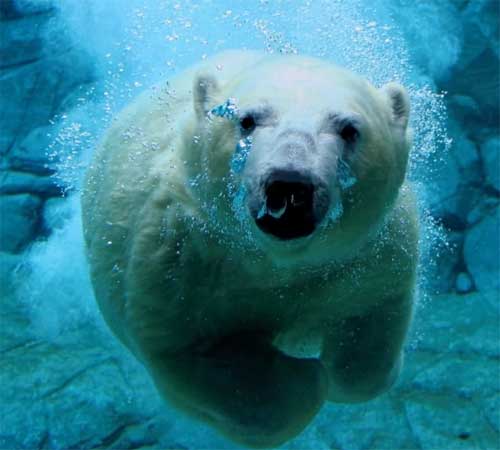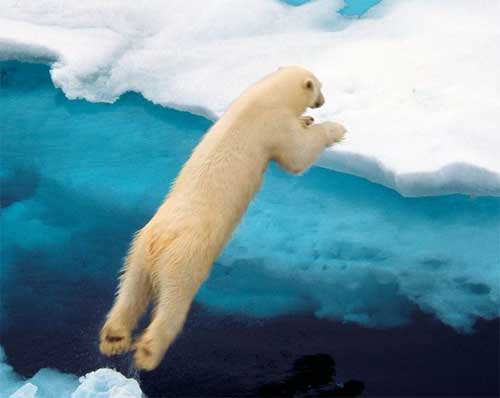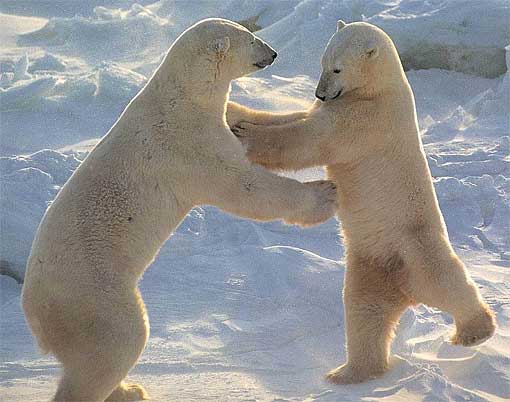Polar Bear – White Giant Maritime Beast
With a range that encompasses the land masses surrounding the Arctic Circle (including Denmark, Greenland, Norway, Russia, Canada, and the United States), the Polar Bear is considered to be the world’s largest carnivore, and is tied (with the Kodiak brown bear) for being the world’s largest bear. Adult male polar bears weigh 770-1,500 lbs (350-680 kg), with the heaviest on record being 2,210 lbs (1,002 kg), and are 7.9-9.8 ft (2.4-3 m) long. With a scientific name (ursus maritimus) that literally means “maritime bear”, it’s no surprise that polar bears spend most of their lives at sea; especially because it’s the best place to hunt their preferred prey (seals).

Polar bears are perfectly equipped for their cold habitat; they have a 3.9 in (10 cm) layer of blubber that helps insulate them, claws shaped perfectly for grabbing prey and/or digging in the ice, traction-heavy padding on their paws, a layer of hollow guard hairs to trap heat, the ability to swim long distances (the blubber makes them more buoyant), a sense of smell that can track a seal from over a mile away, and they can run at speeds of up to 25 mph (40 km/h).

As previously stated, polar bears survive primarily off seals, but in cases where they can’t access this preferred prey, and in cases of opportunity, polar bears have been known to eat birds, eggs, muskox, reindeer, rodents, shellfish, crabs, walrus, whale carcasses, other polar bears, berries, roots, and kelp. When hunting seals, polar bears will often wait outside of the seal’s breathing hole and wait for the seal to come up for air; when it does, the polar bear smells its breath and swipes into the water to catch it. Unfortunately, because of poaching and depleting sea ice, 8 of the 19 polar bear sub-populations are currently in decline, making this majestic species vulnerable for extinction.

